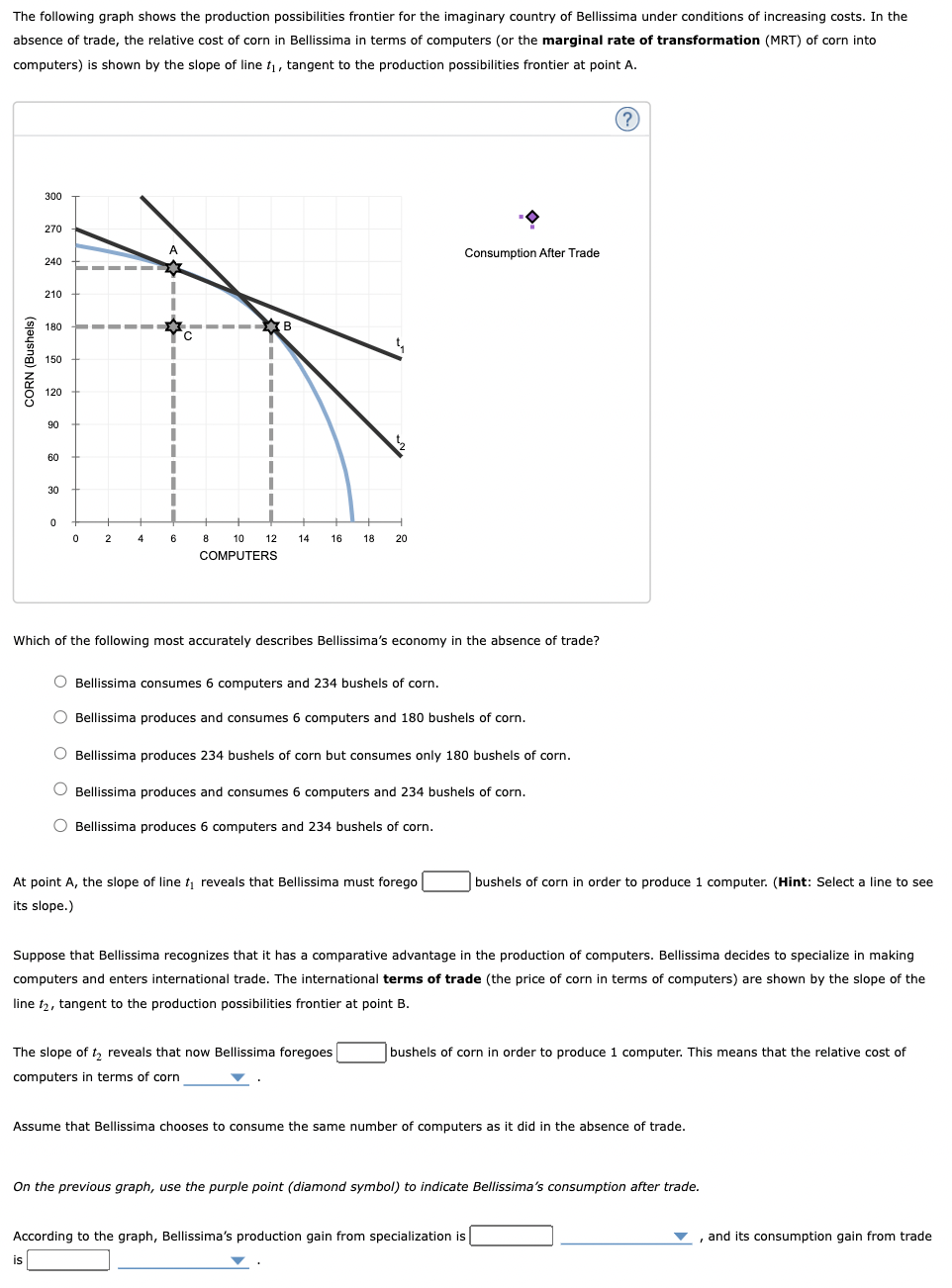Home /
Expert Answers /
Economics /
the-following-graph-shows-the-production-possibilities-frontier-for-the-imaginary-country-of-bellis-pa155
(Solved): The following graph shows the production possibilities frontier for the imaginary country of Bellis ...

The following graph shows the production possibilities frontier for the imaginary country of Bellissima under conditions of increasing costs. In the absence of trade, the relative cost of corn in Bellissima in terms of computers (or the marginal rate of transformation (MRT) of corn into computers) is shown by the slope of line , tangent to the production possibilities frontier at point . Which of the following most accurately describes Bellissima's economy in the absence of trade? Bellissima consumes 6 computers and 234 bushels of corn. Bellissima produces and consumes 6 computers and 180 bushels of corn. Bellissima produces 234 bushels of corn but consumes only 180 bushels of corn. Bellissima produces and consumes 6 computers and 234 bushels of corn. Bellissima produces 6 computers and 234 bushels of corn. At point , the slope of line reveals that Bellissima must forego its slope.) bushels of corn in order to produce 1 computer. (Hint: Select a line to see Suppose that Bellissima recognizes that it has a comparative advantage in the production of computers. Bellissima decides to specialize in making computers and enters international trade. The international terms of trade (the price of corn in terms of computers) are shown by the slope of the line , tangent to the production possibilities frontier at point . The slope of reveals that now Bellissima foregoes bushels of corn in order to produce 1 computer. This means that the relative cost of computers in terms of corn Assume that Bellissima chooses to consume the same number of computers as it did in the absence of trade. On the previous graph, use the purple point (diamond symbol) to indicate Bellissima's consumption after trade. According to the graph, Bellissima's production gain from specialization is , and its consumption gain from trade is